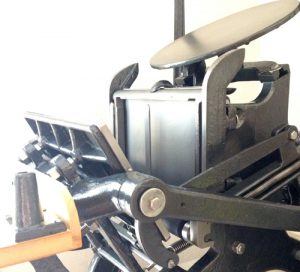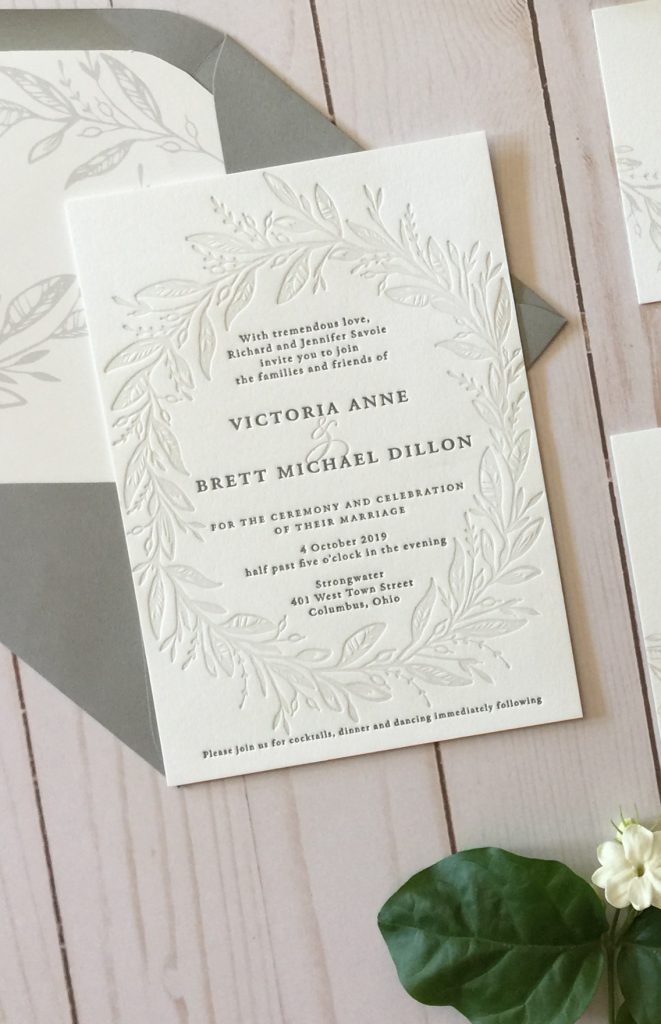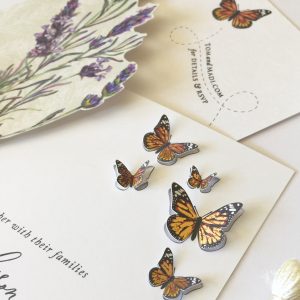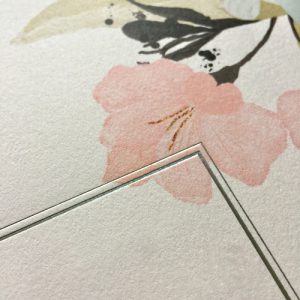


WHAT ARE LETTERPRESS WEDDING INVITATIONS?
Letterpress is a printing technique using raised plates to imprint the ink onto the paper. It differs from flat printing methods in that the ink is pressed into the paper rather than laying it onto the sheet surface as in offset and digital printing. Since letterpress utilizes raised plates the debossed impression created gives an eye-catching tactile finish.
A LITTLE LETTERPRESS HISTORY
In the past letterpress purists have discouraged a deep impression into the paper. It was the sign of an inexperienced pressman. Originally plates were made of copper, or wood, and the force to create the deep impression crushed the plate, rendering it useless after few impressions. With modern letterpress, more durable polymer plates are now the norm and thick, pillowy paper is often used to get a deeper impression, and is especially popular on letterpress wedding stationery. This highly textured look is now sought after and considered luxurious and classic. The letterpress plate can also be used without ink to create a debossed impression alone. This popular and widely used technique is known as a blind impression.
THE COMEBACK OF LETTERPRESS
Mid-century, modern printing techniques became a more cost-effective method of mass reproduction and letterpress fell out of favor. The beautiful old presses (check these out) were forgotten and left to rust for decades. But graphic designers began to seek out the process in the stationery and wedding invitation market and artisan printers rediscovered old presses in storage rooms and garages—or like mine, in an old barn. As polymer plates have become more accessible, letterpress has staged a solid resurgence and has seen a notable comeback in the last decade.
OTHER PRINTING TECHNIQUES
Copper plate engraving, or just engraving was the most popular printing process in the past for invitations and is sometimes confused with letterpress. The process, essentially the opposite method used in letterpress, utilizes a flat metal plate that’s engraved with the image. The plate alone is a work of art, making engraving one of the more costly of the printing processes. The ink catches in the engraved impression and is pressed onto the paper. The force of the plate on the paper causes a slight emboss where the engraved, inked portion of the plate is. The tactile quality is much more subtle and delicate than that of modern letterpress impressions. It’s considered the most traditional of the printing processes for invitations.
Thermography was created to mimic the look of engraving without the cost of expensive engraving plates. The raised texture is created using slow-drying inks topped with thermographic powder that expands when exposed to heat. Thermography can be used with some fun effects.
Additionally The Bridal Press uses two types of foil processes, depending upon your budget and paper selections. Heat stamped foil uses a more traditional plate which creates a slight relief on the paper. While cold foil lays it smoothly onto the surface of the paper.
There are a multitude of additional methods that we use on custom wedding invitations or stationery items to give them their own character. These include but are not limited to silk screen, die cutting, laser cutting, and embossing. As an experienced craftsman, I often combine several printing and finishing techniques to create a work of art, worthy of the event of your dreams.
With decades of hands-on experience creating and working with each and every one of these techniques, your thoughtfully designed stationery will have the organic, timeless and quality look that comes with working with a true artisan.
If you would like to talk about how we can help you with letterpress wedding invitations or wedding or event invitations using other production methods, contact us here.




